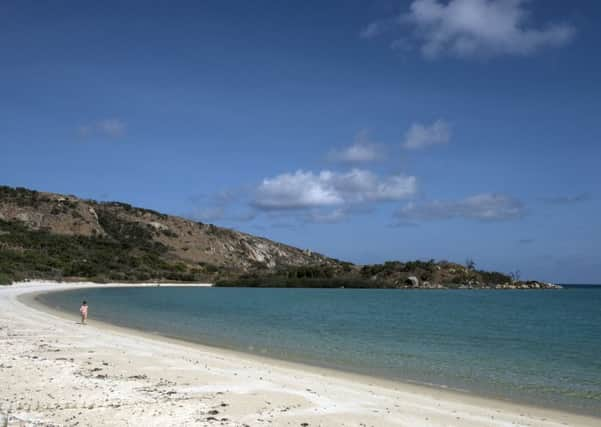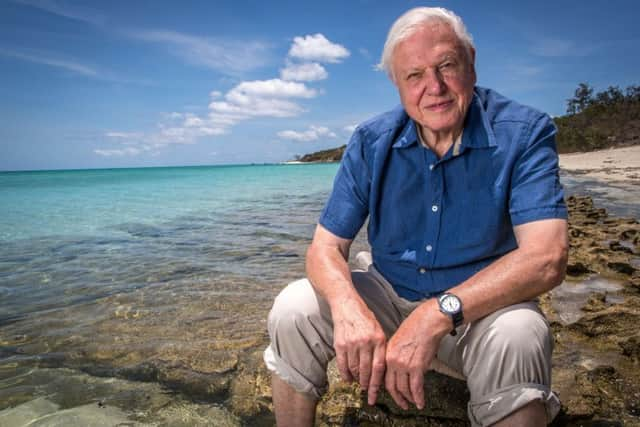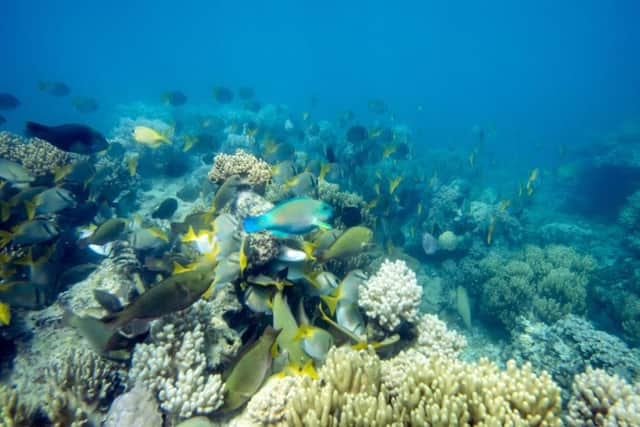Travel: Australia’s Great Barrier Reef


Exploding in the darkness, thousands of astral flecks form brilliant clusters like galaxies in the night sky. Freed temporarily from the constraints of gravity and suspended above a world which I struggle to identify as my own, it’s only when I hoist my head out of the salty seawater that I finally return to reality.
I’m lucky enough to be witnessing coral spawning, a mass reproduction which happens only once a year around the time of a full moon. Guided by torchlight, I’m snorkelling along Australia’s Great Barrier Reef, where millions of coral polyps are simultaneously releasing egg and sperm bundles in what resembles an underwater meteor shower. Eventually they will rise to the surface and fertilise, then sink to the ocean floor.
Advertisement
Hide AdAdvertisement
Hide AdMeasuring 2600km long, made up of 3000 coral reefs and hosting more than 1600 species of fish, the Great Barrier Reef is, according to naturalist Sir David Attenborough, “one of nature’s greatest wonders”. The wildlife enthusiast first dived here in 1957, and almost 60 years later he’s completed a three-part series due to be screened on BBC One this Christmas.


During a three-week filming schedule, he visited Lizard Island, a remote, granite island off the Queensland coast, where I’m fortunate enough to be experiencing the remarkable coral spawning.
From above, it’s easy to identify the damage wreaked by two cyclones in 2014 and earlier this year, when almost 85 per cent of vegetation was lost. Following a major refurbishment, the island’s only hotel, the upscale Lizard Island Resort, reopened in June.
To get my bearings, I hike to the island’s highest point, Cook’s Look, famously scaled by explorer Captain James Cook in 1770, as he searched for a safe passage through the surrounding shoals.
Advertisement
Hide AdAdvertisement
Hide AdI set off on the three-hour round trip at 6am to escape the searing heat, making my way through a mangrove swamp and scrambling across steep boulderss.


Yellow-spotted monitors – who inspired Captain Cook’s choice of name for the island – skulk timidly into the shade, as trilling, yellow-bellied sunbirds compete with the constantly whistling wind.
The resort can arrange trips to the pristine outer reef, where dive sites include Cod Hole and the ominous sounding Snake Pit, although these are not daily. In fact, anyone wanting to scuba dive should plan to stay for at least three or four nights, to allow rest periods before and after flights.
Short on time, my boyfriend and I use a motorised dinghy to explore the island’s shallow fringing reefs and go snorkelling.
Advertisement
Hide AdAdvertisement
Hide Ad“People say, ‘What is the most magical thing you saw in your life; the most magical moment?’,” says Sir Attenborough in the first episode of his new Great Barrier Reef programme, due to air in late December.
“I always say, the first time I put on a mask and went below the surface and moved in three dimensions with just the flick of my fin.”
Those words resonate with me as I immerse myself in another awesome world, as minutes slip easily into hours.
Breathing through a snorkel, I hover above a garden of furled, stony rose petals and clusters of tangled branches. Clown fish peer through the waving, rubbery fronds of anemones and giant clams, some as big as a suitcase, gape open, revealing their colourful treasures.
Advertisement
Hide AdAdvertisement
Hide Ad